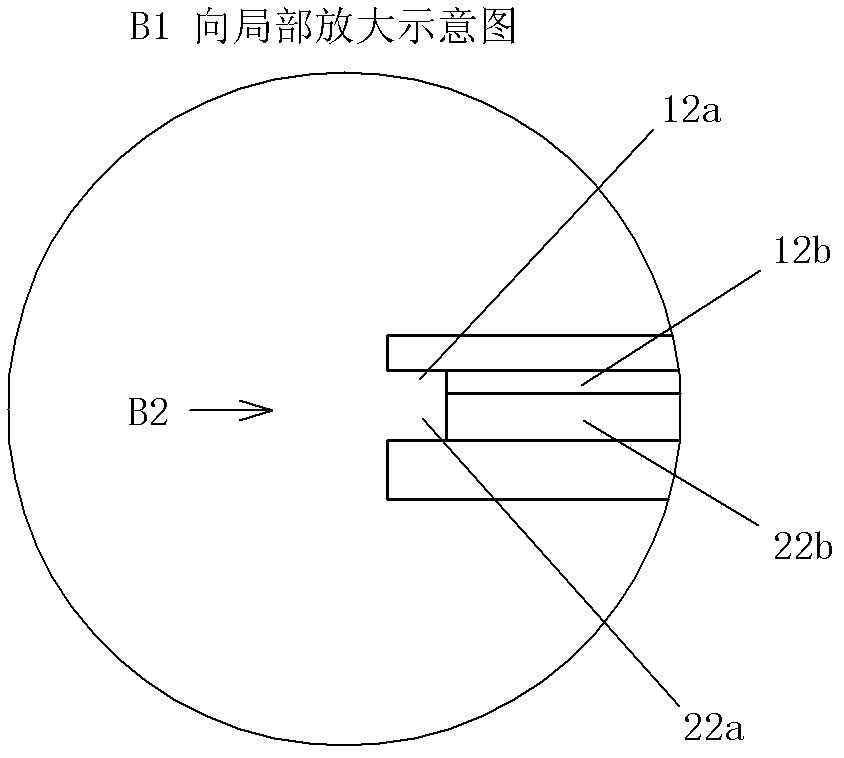[0003]
Chinese patent document CN2495931Y (Patent No. ZL01249911.0) discloses a "heat-generating floor", which records "the structure of the utility model is as follows: figure 1 and figure 2 As shown, it is composed of a reinforced floor board 1 with insulation performance and an electric heating wire 2 embedded in the reinforced floor board 1. A thermal protector 3 and a fuse 6 are connected in series in the electric heating wire 2. In the reinforced floor board 1 There is a longitudinal protrusion 4 on the left end face of the floor board, and a longitudinal groove 5 is arranged on the right end face. The longitudinal protrusion 4 can be matched with the longitudinal groove 5. A plug 7 is respectively installed on the left and right sides of the upper end face of the reinforced floor board 1, and a plug 7 is arranged on the lower end face. A socket 8 is respectively installed at the position corresponding to the upper end surface 7, the plug 7 is matched with the socket 8 and the left and right groups of plugs 7 and sockets 8 on the upper and lower end surfaces are respectively connected with the two ends of the electric heating wire 2 in the reinforced floor board 1 Constitute an
electrification circuit", the heating floor uses the electric heating wire 2 to generate heat for heating and heating, and there are the following problems: 1. Since the electric heating wire 2 usually has a circular cross section, the heat is along the
radius of the cross section when heating. The direction diverges to the surroundings, causing part of the heat to be dissipated to the bottom of the floor, which greatly wastes energy
2. Since the electric heating wire 2 is usually slender, the effective heat dissipation area above the floor is small. If you want to obtain a better heat dissipation effect, you must lay the electric heating wire 2 relatively densely. increased manufacturing costs
3. The electric heating wire 2 is usually relatively soft, so it is more troublesome to pre-embed the electric heating wire 2 spirally embedded in the laminate flooring block 1, and the production and
processing are more difficult
4. The
heating efficiency of the heating wire is low, about 88% to 92%, and the heat is uneven, and high temperature will be generated locally, which is easy to age
Among the above three installation methods, the first method of slotting usually adopts a row of knives to slot vertically and horizontally, which will form sharp edges at the turning, which is easy to damage the insulation
skin of the wire; the second installation method is more difficult to process and is not convenient Large-scale industrial production; the "composite floor" in the third way includes a wide range. For example, laminate flooring is a kind of balanced paper layer, density board, decorative paper layer and wear-resistant paper layer from bottom to top. The composite floor formed by
hot pressing, so structurally speaking, this kind of composite floor cannot pre-embed the heating wire, so the third installation method of the heating wire in this document cannot be implemented by those skilled in the art
The above three installation methods all have the problem of making complex troubles
[0006] Again, it is proposed in this document that the first connector, the second connector, the plug, the first joint and the second joint are all features of a waterproof structure, but it does not solve the waterproof problem of the entire floor
systemAlthough the first joint and the second joint adopt a waterproof structure, there is no mention of how to solve the problem of
waterproofing the connection between the two joints and the heating wire, nor does it involve the contact between the two joints and the
floor plate. The problem of sealing and
waterproofing, when the floor
system is not energized for a period of time, the
water vapor in the air will enter the interior of the floor from the gap between the joint and the floor body, and condense at the joint between the joint and the heating wire. When the power is turned on, there will be serious leakage, which will cause the touch protector to trip immediately. If the touch protector is not installed, it will cause overheating or even burn the floor due to the generation of large current
 Login to View More
Login to View More  Login to View More
Login to View More 


